Home
2/4 Rack
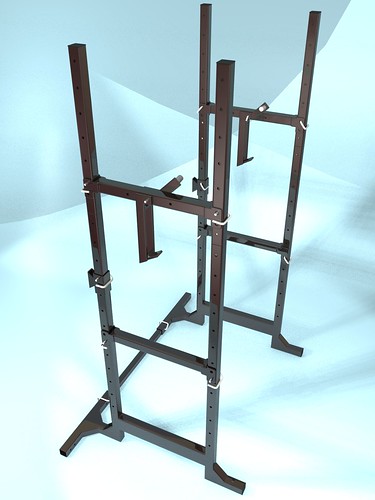
Origins
Stuart McRobert's BRAWN never did a thing for me (neither did HIT or HG for that matter) - however BRAWN did have one useful outcome; its praising of the power rack lead me to design my own rack.
At the time the most viable alternative was Malcolm Watson's two post 'open' rack;
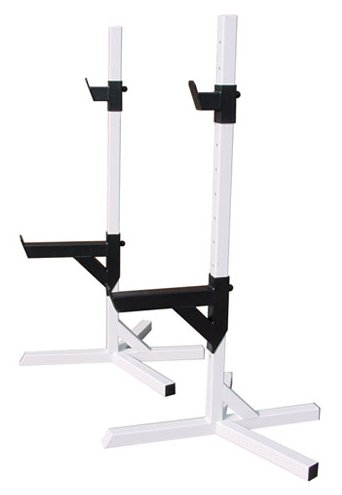
The advantage of the 2 post rack is that it can be stored away after a weights session in a manner similar to a pair of squat stands - this is a great advantage to the garage gorilla who hasn't the space for a permanently rooted standard power cage.
Four Posts
However I wanted a 'proper' 4 post rack; yet it had to be a rack I could store away as easily as the 2 post rack and it also had to be a rack that I could get into a hatchback for easy transportation.
I wanted a 4 post rack because it is stronger and safer. Having 4 posts means that any weight load is borne by the uprights as a compressive stress. Look at the photo below of me doing a partial Dead with 940 lbs, I'll often drop 700, 800, 900 even a thousand pounds onto the rack. The stresses of this dropping are converted to compressive stresses on the 4 posts, there is no bending stress - the result is that the rack is so strong that it doesn't flex at all... it is like dropping the weight onto a block of concrete. Furthermore as the Beams are supported at both ends (rather than at one end) they are thus extra strong without needing any gussets, they can thus be flipped over to give 25 mm increments without having lots of holes on the uprights.
There are two other advantages with 4 posts. The posts surround the barbell so that the weight cannot fall outside and miss the beams. The hooks can go on either front or back posts so you can rack/unrack a squat from the totally free end or put the hooks on the other end for benches.
Beams
The 2/4 Rack beams have an effective length of 550 mm. Because they are supported from both ends and because they are box section beams they are very strong, much stronger than inch diameter pins that are usually used on power racks.
Linked 'T' Bases
T bases are far superior to any other base. First they are tripods and tripods don't wobble.
Look at the Watson rack and you will see that it has 4 feet per base, unless the surface that it is put on exactly matches the level of the feet it will wobble. The crow's foot also gets in the way of the upright - you cannot stand next to the upright (as when racking/unracking for a squat) without tripping over those bases. Its a stupid design. You cannot put a bench where you want it, it has to avoid the base.
Secondly with the Watson rack the bases are not linked so the base of support is defined by the area of each base, whereas with the 2/4 Rack the base of support when linked is defined by the total area of the linked frame - you can actually stand on the base of the 2/4 Rack on the inside of the frame and hang on the post and lean over without it falling over or even moving. Similarly if you knock into one post on the 2/4 Rack you actually knock into the whole weight of the rack.
The spacer that links the 2 halves of the rack allows 20 mm incremental adjustments from really close for dipping to as wide as you want for long bars.
Sumo Beams
It always annoys me that power racks don't have sumo bases. I invented my 2/4 Rack in about 1993 yet since then I've hardly seen a rack with a sumo base. Even if you don't do wide stance squats or sumos as a competitive lift you will benefit from doing wide stance stuff. Even if you never do wide stance stuff it is annoying that the option isn't available. The only place I know of that does sumo bases is http://elitefts.com/ but they do big racks and not garage type equipment, at least not for the UK garage.
These sumo beams are also the lowest beam settings, they are deliberately a bit higher than 225 mm effective plate radius - thus Olympic sized plates can be added/removed easily.
Hooks
These are simple enough they are adjustable in 25 mm increments. I've also made them V shaped so that when a bar is put in them they 'grab' the bar to the uprights rather than the bar rolling around.
Monolift Hooks
You may have seen Rogue monolift hooks. My monolift hooks came out about 2 decades earlier.
Locking Pins
Pins should be made in stainless steel and in a locking shape and these are.
Extensions
I made these a few years ago after getting the idea that I would do some overhead work. I got the rod idea from using rods on my armwrestling table - on the table I need extra plates screwed in to counter twisting and bending forces. However the 2/4 Rack extensions simply slot into the top of each upright thus seamlessly lengthening the length of the uprights. Because the rack is 4 post any stresses from a dropped weight are converted to compressive stresses so no screwed on plates are needed, again the rack is like a rock when it comes to stopping dropped weights.
Summary
- The 2/4 Rack is adjustable in width in 20 mm increments and in height by 25 mm increments.
- Handles massive weights in a whole variety of lifts, from deadlifts standing on blocks to overhead support lifts. Use the 2/4 Rack for 'rack' lifts such as support lifts, rack benches, partial deadlifts.
- The 2/4 Rack has sumo beams for wide stance sumos and wide stance squats. These sumo beams are just above 225 mm plate radius so that you can easily put on and remove Olympic radius plates.
- Each half of the 2/4 Rack is a tripod, so it doesn't wobble - yet each half is linked by a spacer beam so that the 2/4 Rack is freestanding but super stable.
- The rack has extensions for overhead stuff - in normal use it is 1561 mm high but with extensions it is 2261 mm high.
- It is a 4 post power rack not a 2 post rack.
Specifications
- Effective Plate Radius: 240-2290 mm
- Mass: 75 kg
- Effective Beam Length: 550 mm
- Yield Stress: 5000 lbs
Close Ups
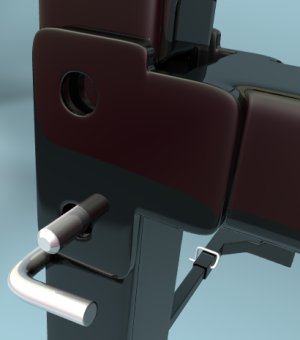
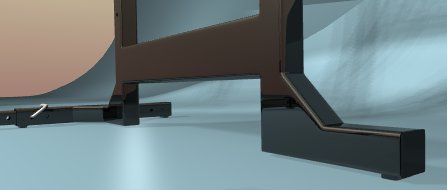
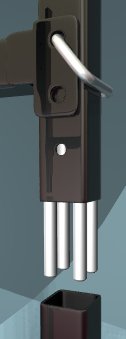
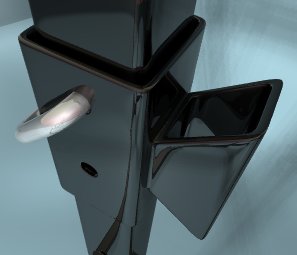
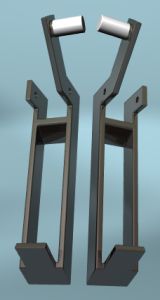

26th November 2023